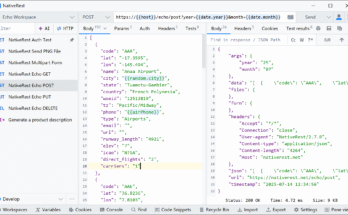Value stream mapping is a lean management tool that enables any organization to “map” or examine their end-to-end process of delivering value. It allows for a better understanding of all value-added and non-value-added steps in the value chain. As a value stream management tool, value stream mapping offers companies a high-level perspective into how all their products and services deliver to customers. It is a holistic approach that involves documenting, analyzing, and improving the flow of resources to produce a certain product or service. It enables companies to visualize how each team performs their work, how teams fit together, and where improvement can be made.
Value stream mapping, when operationalized, will alter the governance of an organization. This process identifies sources of added value and unnecessary waste along a company’s value chain. When pinpointed, optimization decisions can be made about how to increase and eliminate these metrics to improve current processes overall.
Most people trace back the origins of value stream mapping to Toyota Motor Corporation’s “material and information flow,” which was outlined in John Shook and Mike Rother’s book Learning to See published in 1999 and other books. Its roots however are far older, dating back to process mapping techniques in lean manufacturing popularized in the second half of the 20th century.
As this value mapping technique grew in popularity among manufacturing businesses, other industries began to adopt the process. Especially software development, IT operations, and marketing. The advent of Agile and DevOps brought a subsequent application of Value Stream Mapping practices to knowledge work. Now, we are seeing a resurgence in interest in the topic.
Value stream mapping can range from simple to complex, depending on the scope of product development and the number of areas involved. It can be used to make a comprehensive visualization of a highly complex process or focus on a specific segment. Regardless of the type of product or service produced, value stream mapping enables all types of organizations to perform more efficiently.
To perform value stream mapping, teams collaborate to create the following components:
- Current state map: the current method by which products or services are produced for customers.
- Future state map: the target state of value stream we are looking to create.
- Action plan: the steps we’ll take to learn how to move from the current state to the future state.
Having the teams discuss what they see from the value stream map they’ve created will generate many unexpected insights too. There are often small changes to processes that can greatly impact the overall system but that are not immediately visible to the individual teams. The value stream mapping exercise itself creates the space to discuss these new perspectives.
With value stream mapping, teams can determine where the value is created and where it is not. It also determines how each team contributes to the actual value of a particular product or service. Value stream mapping also improves productivity and business efficiency by identifying waste, pain points, and bottlenecks; encouraging cross-functional collaboration; and enhancing product or service quality.
It is this cross-functional collaboration that creates the real benefits of Value Stream Mapping. For many, it may be the first time seeing the end-to-end system, and with that comes understanding. The collaborative nature of creating the Value Stream Map enables those involved to understand each other’s roles in delivering value, further cementing a common vision. I often like to say, paraphrasing Eisenhower, that the true value of a VSM exercise is in the mapping, not the map.
Conclusion
Value stream mapping and value stream management are useful tools in driving business value, creating higher engagement, and enabling faster innovation.
Value stream mapping provides a collaborative cross-functional environment to visualize how work is done and identify bottlenecks. The narrative created in a value stream mapping exercise is a powerful tool to create common understanding and alignment.
Value stream management quantifies and solidifies much of what we see in the adoption of DevOps practices. It allows organizations to visualize the flow and rapidly identify constraints in their systems. It opens up the door to a more holistic view of how an organization delivers value.
Combined with value stream mapping, value stream management creates a value-focused conversation that can help organizations overcome barriers to adoption. To truly get the value from the tooling, businesses need to take it beyond technology to look at the end-to-end customer journey.




